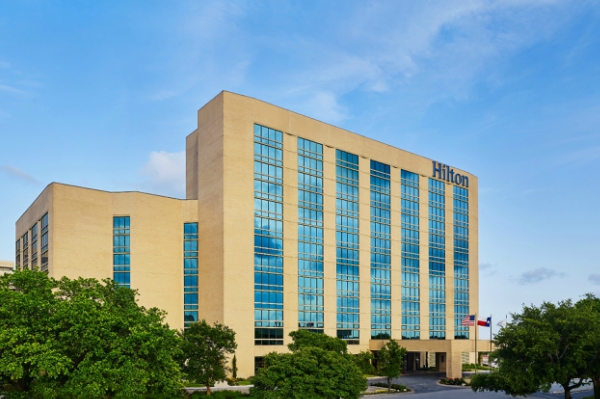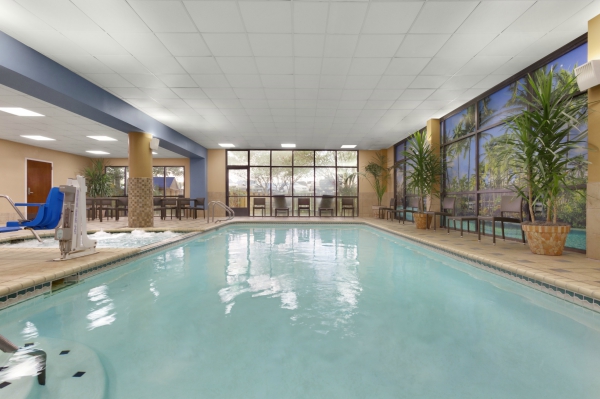Venue & Hospitality
611 NW Loop 410, San Antonio, TX 78216, USA.
Conference Dates: November 15-16, 2017
Hotel Services & Amenities
- Audio/Visual Equipment Rental.
- Business Center.
- Business Phone Service.
- Complimentary Printing Service.
- Express Mail.
- Fax.
- Meeting Rooms.
- Office Rental.
- Photo Copying Service.
- Secretarial Service.
- Telex.
- Typewriter.
- Video Conference.
- Video Messaging.
- Video Phone.
- ATM.
- Baggage Storage.



Transportation
Driving Directions to
From: San Antonio International Airport
To : Hilton San Antonio Airport
DIRECTIONS
- Take the Airport Blvd to I-410 Access Rd / NE Interstate 410 Loop
- Continue on I-410 Access Rd / NE Interstate 410 Loop.
- Take I-410 W and I-410 Access Rd / NW Loop 410 to Pvt Rd
- Turn right towards Pvt Rd
- Destination will be on the right
Travel Time: 8 minutes.
Route Map
About City
San Antonio, officially the City of San Antonio, is the seventh-most populated city in the United States and the second-most populous city in the state of Texas, with a population of 1,409,019. It was the fastest growing of the top 10 largest cities in the United States from 2000 to 2010, and the second from 1990 to 2000. The city straddles South Texas and Central Texas and is on the south-western corner of an urban mega region known as the Texas Triangle.

San Antonio is the center of the San Antonio–New Braunfels Metropolitan Statistical Area. Commonly referred to as Greater San Antonio, the metropolitan area has a population of nearly 2.4 million based on the 2015 US Census estimate, making it the 25th-largest metropolitan area in the United States and third-largest in the state of Texas. Growth along the Interstate 35 and Interstate 10 corridors to the north, west and east make it likely that the metropolitan area will continue to expand.
San Antonio was named for Saint Anthony of Padua, whose feast day is on June 13, by a 1691 Spanish expedition in the area. The city contains five 18th-century Spanish frontier missions, including The Alamo and San Antonio Missions National Historical Park, which were designated UNESCO World Heritage Sites in 2015. Other notable attractions include the River Walk, the Tower of the Americas, the Alamo Bowl, and Marriage Island. Commercial entertainment includes SeaWorld and Six Flags Fiesta Texas theme parks, and according to the San Antonio Convention and Visitors Bureau, the city is visited by about 32 million tourists a year. The city is home to the five-time NBA champion San Antonio Spurs and hosts the annual San Antonio Stock Show & Rodeo, one of the largest such events in the country.
San Antonio is located near 29.5°N 98.5°W. It is about 75 miles to the southwest of its neighboring city, Austin, the state capital. The city is also about 190 miles west of Houston and about 250 miles south of the Dallas–Fort Worth area. According to the U.S. Census Bureau, in 2000 the city had a total area of 412.07 square miles (1,067.3 km2)—407.56 square miles (1,055.6 km2) (98.9%) of land and 4.51 square miles (11.7 km2) (1.1%) of water. The city sits on the Balcones Escarpment. The altitude of San Antonio is 772 feet (235 m) above sea level.
San Antonio has a transitional humid subtropical climate (Köppen: Cfa) The weather is hot in the summer, comfortably warm or mild winters subject to descending northern cold fronts in the winter with cool to cold nights, and warm and rainy in the spring and fall.
San Antonio receives about a dozen subfreezing nights each year, typically seeing some sort of wintry precipitation about once every 2-3 winters (i.e. sleet/freezing rain), but accumulation and snow itself are very rare. Winters may pass without any freezing precipitation at all, and up to a decade has passed between snowfalls in the past. According to the National Weather Service, there have been 31 instances of snowfall (a trace or more) in the city in the past 122 years, about once every four years. Snow was most recently seen on February 4, 2011 when 0.5 in (1.3 cm) of snow coated the city. In 1985, the city received a record snowfall of 16 inches (41 cm).
